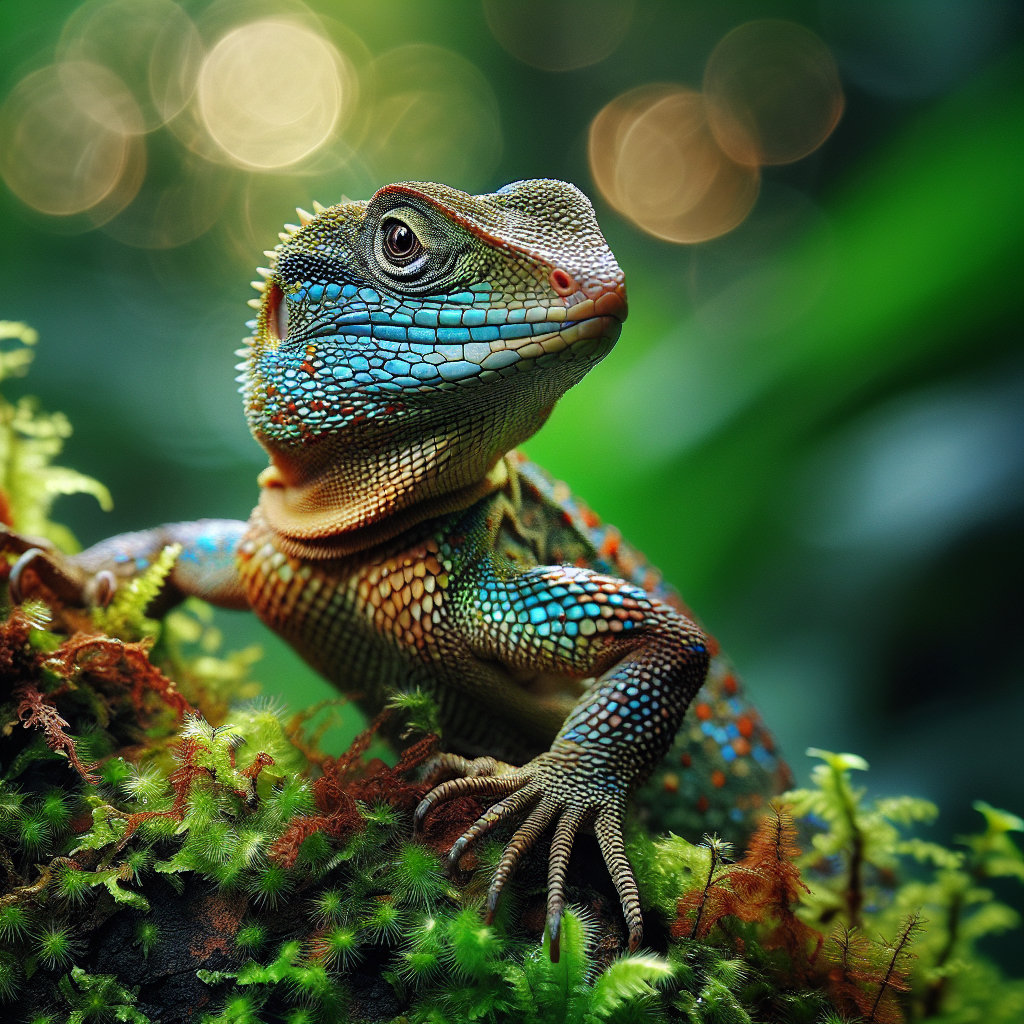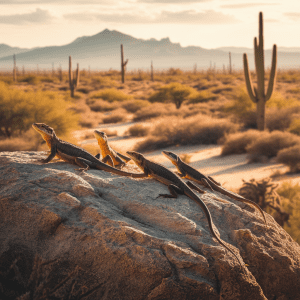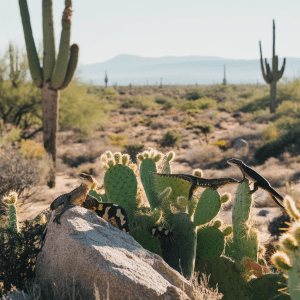Introduction to Lizard Diversity in Asia
Exploring the fascinating world of lizard diversity in Asia is like embarking on a thrilling adventure through nature’s wonders. Just picture this – lush tropical forests teeming with colorful reptiles, each species more captivating than the last. It’s a sight to behold!
Did you know that Asia is home to an incredible array of lizard species, from the tiny geckos that scurry up walls to the majestic monitor lizards that reign over the land? These diverse creatures play a crucial role in maintaining the delicate balance of their ecosystems, making them an essential part of the region’s biodiversity.
As we delve into the topic of Lizard Diversity Hotspots in Asia, we’ll uncover hidden gems of knowledge that shed light on the unique characteristics and habitats of these fascinating reptiles. From the vibrant rainforests of Southeast Asia to the arid deserts of Central Asia, each hotspot offers a glimpse into the rich tapestry of lizard life on the continent.
Imagine wandering through a dense jungle, your eyes scanning the trees for a glimpse of a colorful chameleon or a swift skink darting across the forest floor. These moments of discovery remind us of the intricate web of life that surrounds us and the importance of preserving these habitats for future generations to enjoy.
So, join me on this virtual expedition as we unravel the mysteries of Lizard Diversity Hotspots in Asia. Let’s marvel at the beauty of these ancient creatures and gain a deeper appreciation for the intricate ecosystems that support their existence. Are you ready to embark on this journey of discovery with me?
Importance of Identifying Hotspots
Have you ever thought about why identifying hotspots of lizard diversity is so crucial? It’s not just about listing the different species found in a particular area; it goes much deeper than that. Imagine this – each hotspot is like a treasure trove of unique lizard species, each playing a vital role in their ecosystem. It’s like a puzzle where each lizard piece fits perfectly to maintain the balance of nature.
Did you know that by pinpointing these hotspots, scientists can better understand the distribution patterns of lizard populations and the factors influencing their diversity? It’s like uncovering a hidden code that reveals the secrets of biodiversity in Asia. Understanding these hotspots not only sheds light on the incredible variety of lizards but also helps in devising conservation strategies to protect these species for future generations.
One interesting fact about identifying lizard diversity hotspots is that it’s not just about counting the number of species present. It’s about recognizing the interconnected web of life that exists in these regions. From the smallest gecko to the largest monitor lizard, each species contributes to the intricate tapestry of biodiversity. By focusing on these hotspots, we can gain valuable insights into the complexity of ecosystems and the delicate balance that sustains life.
So, the next time you hear about lizard diversity hotspots in Asia, remember that it’s not just another scientific concept. It’s a window into the wonders of nature, offering a glimpse of the beauty and complexity of the world we live in. It’s about appreciating the diversity of life forms that share our planet and recognizing our responsibility to protect and preserve them for the future.
Top Lizard Diversity Hotspots in Asia
Have you ever thought about the incredible diversity of lizard species found in Asia? It’s truly fascinating to explore the top Lizard Diversity Hotspots in this region and witness the unique characteristics of these reptiles up close.
One interesting fact about these hotspots is that each location boasts a distinct variety of lizard species, adapted to their specific environments. From the lush rainforests of Borneo to the arid deserts of Central Asia, you’ll encounter a diverse array of lizards that have evolved to thrive in their habitats.
During my visit to one of these hotspots, I was amazed by the vibrant colors and intricate patterns displayed by the lizards. Observing their behavior in the wild was a truly memorable experience, highlighting the importance of preserving these ecosystems for future generations to appreciate.
Exploring these hotspots not only offers a chance to marvel at the beauty of these creatures but also sheds light on the crucial role they play in maintaining ecological balance. By understanding the characteristics of different lizard species and their interactions within their habitats, we gain valuable insights into the intricate web of life in these regions.
As we delve deeper into the world of lizard diversity in Asia, it raises thought-provoking questions about conservation efforts and the challenges faced by these species in the face of habitat loss and climate change. How can we ensure the long-term survival of these unique lizard populations, and what can we do to protect their natural habitats?
By venturing into the top Lizard Diversity Hotspots in Asia, we embark on a journey of discovery and appreciation for the rich biodiversity of these fascinating reptiles. Let’s continue to explore, learn, and advocate for the conservation of these remarkable creatures and their habitats.
Characteristics of Lizard Species in Hotspots
Have you ever stopped to marvel at the incredible diversity of lizard species in Asia? It’s truly fascinating how these creatures have adapted to various environments and developed unique characteristics over time.
Let me share an interesting fact about lizard diversity in Asia that might surprise you. Did you know that some lizard species in these hotspots have evolved special camouflage abilities to blend seamlessly into their surroundings? It’s like nature’s own invisibility cloak!
When we delve into the characteristics of lizard species found in these hotspots, we uncover a world of wonder. From vibrant colors and intricate patterns to specialized body shapes for different habitats, each species has its own story to tell. Imagine encountering a gecko with sticky toe pads effortlessly climbing walls or a chameleon changing colors to match its mood – it’s like stepping into a real-life fantasy world!
Exploring the biodiversity of lizards in Asia not only offers a visual treat but also sheds light on the ecological significance of these creatures. Lizards play crucial roles in maintaining ecosystem balance by controlling insect populations and serving as prey for larger predators. Their presence indicates a healthy environment, making these hotspots vital for conservation efforts.
Considering the practical side, one tip for observing lizard species in hotspots is to be patient and observant. These creatures can be elusive, so quiet movements and keen observation skills are key to catching a glimpse of them in their natural habitat. Remember, respect for their environment is essential for both their well-being and your enjoyment.
As we unravel the mysteries of lizard diversity in Asia, we are reminded of the interconnectedness of all living beings on our planet. Each species, no matter how small, contributes to the intricate tapestry of life, highlighting the importance of preserving these hotspots for future generations to appreciate and learn from.
Conservation Efforts in Hotspot Regions
When it comes to exploring the characteristics of lizard species in hotspot regions, one interesting fact that comes to mind is the incredible diversity of adaptations these creatures have developed over time. It’s truly fascinating to learn about the various ways in which lizards have evolved to thrive in their environments.
For instance, have you ever heard of the Satanic leaf-tailed gecko? This unique lizard, found in Madagascar, has evolved to resemble a dead leaf with its flattened body and leaf-like tail. It’s a perfect example of how camouflage plays a crucial role in the survival of certain lizard species. Imagine stumbling upon one in the wild and being amazed by its intricate design blending seamlessly with the surroundings!
Understanding these characteristics not only adds to the wonder of nature but also sheds light on the importance of conservation efforts in preserving such remarkable biodiversity. As we delve deeper into the world of lizards, we begin to appreciate the delicate balance of ecosystems and the interconnectedness of all living beings.
Exploring these characteristics also raises thought-provoking questions about the future of lizard populations in hotspot regions. How can we ensure the continued existence of these fascinating species in the face of environmental challenges and human impact? It’s a question that prompts us to reflect on our role in protecting the diversity of life on our planet.
By appreciating the unique characteristics of lizard species in hotspot regions, we not only gain insight into the wonders of nature but also recognize the need to safeguard these creatures for future generations to enjoy. Let’s continue to marvel at the incredible adaptations of lizards and strive to protect their habitats for the benefit of all living beings.
Ecological Significance of Lizard Diversity
Have you ever thought about how the diversity of lizard species in Asia plays a crucial role in our ecosystem? It’s fascinating to consider the interconnected web of life on our planet. Each lizard species has its own unique characteristics and adaptations that contribute to the overall balance of nature.
Recently, I read an interesting fact that some lizard species in Asia have the ability to change their colors to blend in with their surroundings, providing them with camouflage and protection from predators. Isn’t that amazing? It’s like they have their own superpower right in the animal kingdom!
When we delve into the ecological significance of lizard diversity, we begin to appreciate the intricate relationships between these reptiles and their environment. Lizards play a vital role in controlling insect populations, pollinating plants, and even dispersing seeds. Imagine a world without these little reptiles – it would be a very different place indeed.
But here’s a thought-provoking question: How can we ensure the continued survival of these diverse lizard species in the face of increasing environmental threats? Climate change, habitat loss, and human activities all pose significant challenges to lizard populations in Asia. As nature enthusiasts, it’s up to us to advocate for conservation efforts and raise awareness about the importance of preserving biodiversity.
So, the next time you spot a lizard scurrying across your path, take a moment to appreciate the beauty and complexity of these creatures. They may be small in size, but their impact on our world is immeasurable. Let’s do our part to protect and conserve the lizard diversity hotspots in Asia for generations to come.
Threats to Lizard Populations in Asia
Let me tell you about the threats facing lizard populations in Asia. Did you know that due to habitat destruction and illegal wildlife trade, many species of lizards are facing a serious decline in numbers? It’s a concerning issue that requires our attention and action.
Imagine this – you’re out exploring a lush forest in Asia, eagerly searching for colorful and unique lizard species. However, as you venture deeper into the forest, you start noticing signs of deforestation and habitat destruction. This is a harsh reality for many lizard populations in Asia. Their habitats are being destroyed at an alarming rate, leading to a loss of critical resources and shelter.
The illegal wildlife trade is another major threat to lizards in Asia. Some species are targeted for their skins, which are used in the fashion industry, while others are captured for the exotic pet trade. This exploitation not only disrupts the natural balance of ecosystems but also puts these fascinating creatures at risk of extinction.
As we witness the decline of lizard populations in Asia, it raises important questions about our role in preserving biodiversity. How can we better protect these vulnerable species and their habitats? What steps can we take to combat illegal wildlife trade and habitat destruction? These are crucial questions that demand our attention and collective efforts.
By raising awareness about the threats facing lizard populations in Asia, we can work towards implementing conservation initiatives, supporting sustainable practices, and advocating for stronger protection measures. Together, we can make a difference in safeguarding the rich diversity of lizards in Asia for future generations to appreciate and enjoy.
Tips for Exploring Lizard Hotspots Safely
Exploring lizard hotspots can be an exciting adventure, but it’s essential to keep safety in mind. When venturing into these regions, remember to respect the environment and the creatures that call it home. One practical tip I always follow is to wear appropriate footwear and clothing to protect yourself from potential hazards like rough terrain or extreme weather conditions.
I remember one time when I was hiking in a lizard hotspot in Asia, I encountered a beautiful but venomous lizard species. It was a reminder of the importance of being cautious and maintaining a safe distance from wildlife. So, my advice is to always observe lizards from a respectful distance to avoid any unwanted encounters.
Taking photos of these fascinating creatures can be tempting, but it’s crucial to do so without disturbing their natural behavior. Remember, these hotspots are not just tourist attractions but also crucial habitats for diverse species. By being mindful of our actions, we can help preserve these environments for future generations to enjoy.
While exploring lizard hotspots, have you ever wondered how these creatures have adapted to their unique environments over time? Their survival strategies and interactions with other species can offer valuable insights into the delicate balance of ecosystems. So, next time you’re observing lizards in their natural habitat, take a moment to reflect on the interconnectedness of life on our planet.
By approaching lizard hotspots with a sense of wonder and respect, we can not only enjoy the beauty of nature but also contribute to the conservation of these precious ecosystems. So, lace up your hiking boots, grab your camera, and get ready to embark on a memorable journey through the diverse and enchanting world of lizard diversity hotspots in Asia.
Future Prospects for Lizard Conservation
Have you ever thought about the future of lizard conservation in Asia? It’s a topic that’s both fascinating and crucial for preserving biodiversity in the region. As we delve into the prospects for lizard conservation, let’s consider the broader implications of our actions on these unique creatures.
When we think about the future of lizard conservation, it’s essential to recognize the interconnectedness of ecosystems. Lizards play a vital role in maintaining ecological balance, from controlling insect populations to serving as prey for larger predators. By safeguarding lizard diversity, we are not just protecting individual species but also ensuring the health of entire ecosystems.
As we look ahead, one key question to ponder is how we can effectively engage local communities in conservation efforts. Encouraging sustainable practices and raising awareness about the importance of preserving lizard habitats are crucial steps in securing a brighter future for these fascinating creatures. It’s not just about protecting lizards; it’s about fostering a harmonious relationship between humans and the natural world.
Another aspect to consider is the role of scientific research and technological advancements in enhancing conservation strategies. By studying the behaviors, habitats, and threats faced by different lizard species, researchers can develop targeted conservation plans that yield more significant results. Harnessing the power of innovation can lead to more effective conservation measures and better outcomes for lizard populations in hotspots across Asia.
Ultimately, the future of lizard conservation hinges on our collective efforts to prioritize environmental stewardship and biodiversity protection. Each action we take, whether big or small, contributes to shaping the destiny of these remarkable creatures and the ecosystems they inhabit. By fostering a sense of responsibility and respect for nature, we can pave the way for a sustainable future where lizard diversity thrives.
Conclusion: Preserving Lizard Diversity in Asia
Have you ever thought about how our actions today can impact the future of lizard populations in Asia? It’s fascinating to consider the broader implications of conservation efforts and how they can shape the biodiversity of our planet for generations to come.
As we delve into the topic of future prospects for lizard conservation, I can’t help but share an interesting fact with you. Did you know that lizards play a crucial role in maintaining ecological balance? By preserving their diversity and habitats, we are not just protecting individual species but also safeguarding the intricate web of life in these regions.
When we think about the future of lizard conservation, it’s essential to consider the challenges we may face along the way. Climate change, habitat loss, and poaching are just a few of the obstacles that conservationists are up against. However, despite these challenges, there is hope. By raising awareness, supporting conservation initiatives, and implementing sustainable practices, we can work towards a brighter future for lizards in Asia.
Now, let’s talk about practical tips that can help us contribute to lizard conservation efforts. Simple actions like reducing our carbon footprint, supporting local conservation projects, and educating others about the importance of biodiversity can make a significant impact. Every small step counts when it comes to preserving the rich diversity of lizard species in Asia.
So, here’s a thought-provoking question for you: How can we inspire more people to take action and become stewards of lizard diversity in Asia? By engaging in conversations, sharing knowledge, and fostering a sense of responsibility towards our natural world, we can collectively work towards a sustainable future for lizards and all living beings on our planet.




